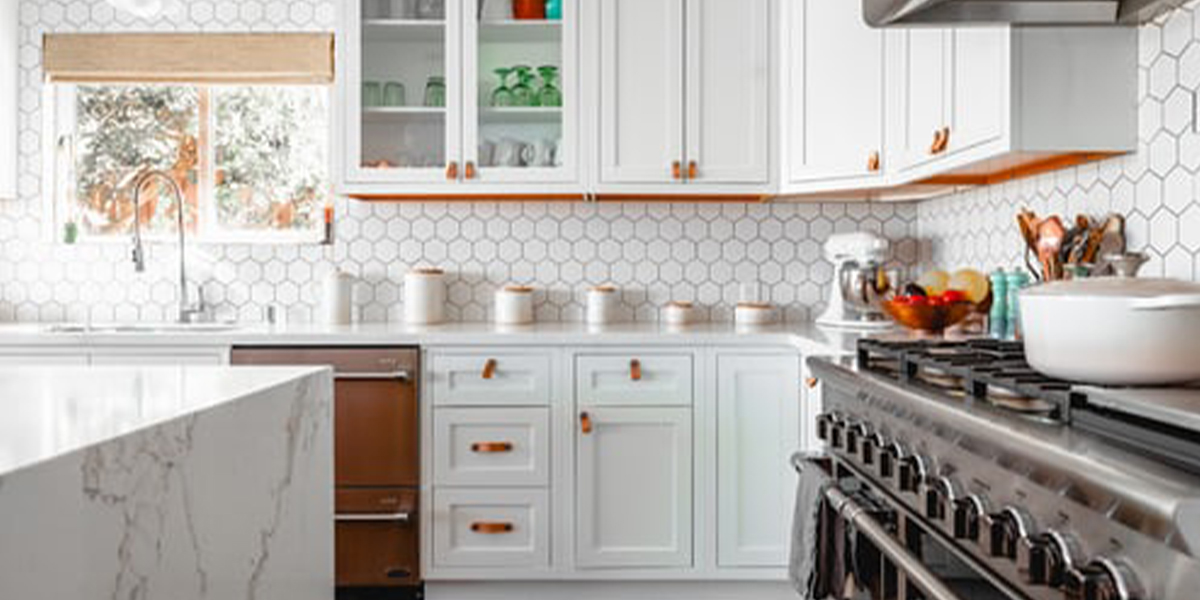When remodeling your kitchen, consider using formaldehyde-free cabinets.
You should be aware that the kitchen cabinets you are thinking about purchasing can be formaldehyde-filled. Despite the fact that extremely small amounts of formaldehyde won’t do any harm, greater amounts may be harmful to you and your family. The cabinets’ odor after installation will be the most unpleasant part and will persist for a considerable period.
Materials Frequently Used for Kitchen Cabinets
Melamine
Melamine paper covers particle board, which is used to construct melamine cabinets. Formaldehyde is present in every available type of particle board. Some particle boards meet or exceed CARB2 board requirements, even though they were previously considered to have lower formaldehyde emission levels.
MDF
One can make laminate and veneered boards for kitchen cabinets using MDF. One brand of MDF produces its boards using soybean glue instead of the formaldehyde-based glues found in almost all other MDFs, making it considered formaldehyde-free.
Plywood
Kitchen cabinets frequently use plywood, but you should be aware that not all varieties of plywood are formaldehyde-free. Because they utilize less expensive formaldehyde-based glue to create it, plywood made in China contains a lot of formaldehyde. The Canadian maple plywood uses a formaldehyde-free pure bond core and non-toxic soybean glue for an environmentally friendly option.
Materials Frequently Used for Kitchen Cabinet Doors
Kitchen cabinet doors are frequently made of materials different from those used to construct the cabinets themselves. Therefore, when looking for new kitchen cabinets, you must be careful with the items you choose to buy.
MDF
Cabinet doors that will eventually be painted are frequently made of MDF. Despite the fact that the majority of MDF does include formaldehyde, there is one that uses soybean glue rather than the dangerous glue. Lamination and veneering are additional uses for MDF.
Particle Core Board
Both laminated and veneer doors are made of particle core board. Since all particle core boards contain formaldehyde, emissions are inevitable upon installation.
Wood
Wood doesn’t require glue to hold it together, so it’s almost formaldehyde-free. Proper ventilation in your kitchen can typically prevent the small emissions that some wood species may produce.
Paint Used for Kitchen Cabinets
Contrary to popular belief, painting kitchen cabinets does not necessarily need a simple brush. Due to the smooth appearance of the finished result, many individuals prefer to spray-finish their kitchen cabinets. The woodworking industry frequently uses pre- and post-catalyzed paints. To ensure ease of application and long-lasting appearance, these paints undergo catalyzation.
The most recent choice, which more factories are choosing, is conversion varnish. The final result will be durable if you choose this paint option. Conversion varnish and post-cat lacquers are products that the woodworking business frequently uses.
Unica Concept’s Formaldehyde-Free Kitchen Cabinets Are a Good Idea
If you’re seeking for unique, imaginative suggestions to add style to your kitchen, have a look at the broad range of kitchen accessories offered by Unica Concept. When it comes to custom-built cabinetry, we are famous for our thorough attention to detail and excellent customer service. Throughout the entire kitchen construction process, we can offer additional design advice and help you make the most of your white oak cabinets.

